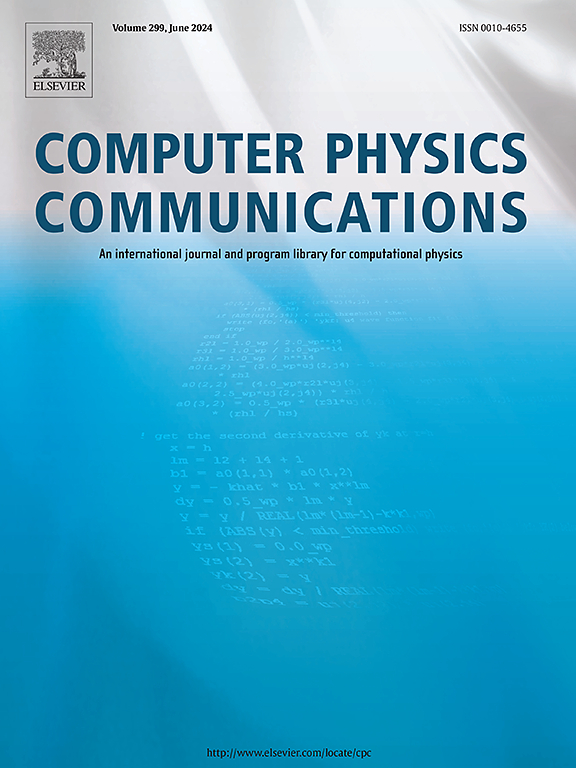Spatio-temporal neural operator on complex geometries
IF 7.2
2区 物理与天体物理
Q1 COMPUTER SCIENCE, INTERDISCIPLINARY APPLICATIONS
引用次数: 0
Abstract
In engineering and Artificial Intelligence (AI) scenarios, learning spatio-temporal dynamics is not only associated with high-resolution time series, but also often accompanied by complex computational domains. Consequently, learning high-dimensional spatio-temporal dynamics on complex geometries remains a significant challenge in both machine learning and engineering fields. Recently, Neural Operators have emerged as the lasted method which can learn mapping between functions with a discretisation resolution invariant network framework, and have increasingly been applied in engineering scenarios involving spatio-temporal dynamics. However, most existing neural operators require uniform grid data defined over regular spatio-temporal domains, making them inapplicable for engineering problems involving complex geometries. To address this limitation, we propose a Spatio-Temporal Neural Operator (STNO) that can learn mappings between functions defined simultaneously in the temporal domain and the complex geometric domain. The proposed STNO features a spatio-temporal iterative kernel integration module that separately encodes high-dimensional spatial information and temporal information into different low-dimensional frequency spaces, thus enabling efficient parameterised learning. Additionally, the model structure of STNO is independent of the discretisation resolution in both temporal and spatial domains. Experiments on several engineering case studies demonstrate the effectiveness and generality of the proposed STNO in learning spatio-temporal dynamics on complex geometries.
复杂几何的时空神经算子
在工程和人工智能(AI)场景中,学习时空动力学不仅与高分辨率时间序列相关,而且往往伴随着复杂的计算域。因此,学习复杂几何上的高维时空动态仍然是机器学习和工程领域的一个重大挑战。近年来,神经算子作为一种具有离散化分辨率不变网络框架的函数间映射学习方法,在涉及时空动态的工程场景中得到了越来越多的应用。然而,大多数现有的神经算子需要在规则的时空域中定义统一的网格数据,这使得它们不适用于涉及复杂几何的工程问题。为了解决这一限制,我们提出了一个时空神经算子(STNO),它可以学习在时间域和复杂几何域同时定义的函数之间的映射。提出的STNO具有时空迭代核积分模块,将高维空间信息和时间信息分别编码到不同的低维频率空间,从而实现高效的参数化学习。此外,STNO的模型结构在时间和空间上都与离散化分辨率无关。几个工程案例的实验证明了该方法在学习复杂几何的时空动力学方面的有效性和通用性。
本文章由计算机程序翻译,如有差异,请以英文原文为准。
求助全文
约1分钟内获得全文
求助全文
来源期刊

Computer Physics Communications
物理-计算机:跨学科应用
CiteScore
12.10
自引率
3.20%
发文量
287
审稿时长
5.3 months
期刊介绍:
The focus of CPC is on contemporary computational methods and techniques and their implementation, the effectiveness of which will normally be evidenced by the author(s) within the context of a substantive problem in physics. Within this setting CPC publishes two types of paper.
Computer Programs in Physics (CPiP)
These papers describe significant computer programs to be archived in the CPC Program Library which is held in the Mendeley Data repository. The submitted software must be covered by an approved open source licence. Papers and associated computer programs that address a problem of contemporary interest in physics that cannot be solved by current software are particularly encouraged.
Computational Physics Papers (CP)
These are research papers in, but are not limited to, the following themes across computational physics and related disciplines.
mathematical and numerical methods and algorithms;
computational models including those associated with the design, control and analysis of experiments; and
algebraic computation.
Each will normally include software implementation and performance details. The software implementation should, ideally, be available via GitHub, Zenodo or an institutional repository.In addition, research papers on the impact of advanced computer architecture and special purpose computers on computing in the physical sciences and software topics related to, and of importance in, the physical sciences may be considered.
 求助内容:
求助内容: 应助结果提醒方式:
应助结果提醒方式:


